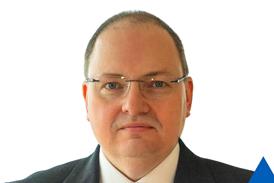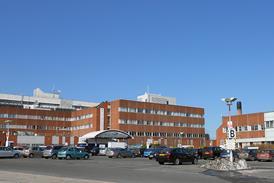In the first of a series of articles, David Gilbert and Mark Doughty look at the roles patient leaders can play and the challenges they face.
Fatima Koroma is an advocate for equalities in Croydon, south London and active within her local HealthWatch pathfinder. “It’s a big job, trying to influence professionals and those in power. I’ve recently had some training and I am feeling more confident that my opinions are valued by professionals now.”
Patrick Ojeer, whose son has sickle-cell disease, is a member of a national advisory group for commissioning specialist services: “It’s time for people like us to be valued for what we do. Professionals get support. Why shouldn’t we?”
These patient representatives are a new generation of health leaders who are not professionally involved in healthcare but are seeking to transform services or promote community wellbeing.
When patients can both manage their own health and go on to develop the confidence and skills to lead and influence others, something special happens: new collaborative systems of healthcare take shape and positive solutions emerge to healthcare problems, locally and nationally. This wide range of people have seldom been seen as one community.
Jeremy Taylor, chief executive of National Voices, the umbrella charity for health voluntary organisations says: “There are so many people involved in shaping care services for the better: campaigners, champions, advocates, patient representatives. Though they might not recognise the term, they are patient leaders - yet we don’t nurture and harness their leadership potential. For us, recognising the need to invest in patient leadership is vital to give full force to the government’s mantra of ‘no decision about me without me’.”
But the opportunities are often limited. Some people join groups such as LINks, but many don’t want to spend cold evenings in boring committees. For those with ideas for improving community wellbeing the opportunities are limited and funding all but non-existent. Meanwhile, the NHS sets up engagement structures without being too bothered about building the capacity of those involved. A bewildering variety of institutionally led engagement initiatives fish in the same small pool for talented representatives.
Nicola Kingston, co-chair of Lambeth LINk, says she can see a growing number of people recognising that the only way to address health inequalities is by citizen involvement and using the assets that are so rich in communities. “But there are moments when the road seems long and winding, and most people have their focus on budgets and transition processes. It needs real leadership for the authorities to focus on the shared decision making that will help them in difficult days,” says Ms Kingston.
“Lambeth Council has been using roundtable forums to share their budget issues and having mature discussions with all parties affected. It would be great if the disparate parts of the new NHS would group to share problems and solve them with patients and the public, too.”
The challenges
Patients who get involved as leaders are seen as having an axe to grind or a personal agenda. But their experience of managing ill-health or of using services - their anger or gratitude - is the fuel for action and the motivation to improve things for others. It’s the same motivation that has launched a thousand health professional careers.
But too much emotion can burn you up. Feeling marginalised can bring up previous feelings of powerlessness and keep people stuck in angry mode. This hampers efforts to build trusting relationships with, and influence, others.
Health professionals are wary of patient leaders becoming “too professional”. But those articulating the interests of others have to be clear about their role and conduct themselves appropriately. Keeping the passion alive, while being professional, is at the core of being a patient leader.
It is not about “leaving personal baggage behind”, but being able to pack it in a smarter bag.
The patient leader needs to deal with powerful professionals. In the community, it can mean becoming a partner with other professionals, for example as a peer-to-peer support worker, and being part of a formal team with professional accountabilities. Many have had professional experience and can fit in easily. Others require sensitive line management and support.
For the representative, dealing with a room full of professionals, it can be daunting and lonely. The patient leader has to shift the dynamic (often unaided) from a child-parent relationship with professionals to a dialogue of equals. On the way they need to develop a nose for where power and decision-making authority lie. They don’t need a map of the territory so much as good navigational skills.
Realising that systems are complex can lead to more frustration and demands a flexibility of styles. Just like professional leaders, the patient leader has to learn to work with others and come to realise they are not superheroes who can go it alone. They need planning and project management skills and a sophisticated sense of who can help.
Most community-facing leaders are on the “same side” as professionals. But for the system-facing leaders, it is different. Historically, community leaders draw their credibility from the support of those they represent. But patient leaders are increasingly finding themselves “in between” communities and healthcare organisations. We have worked with LINk members questioning the old campaigning style and traditional oppositional stance (such as to cuts in services). Do they work “against” or “with” professionals and organisations? Moving beyond an “us and them” attitude is a major challenge.
Patient leaders need to be solution focused. Too often in the past, the familiar habitual response is to moan about what is wrong. Now there is an opportunity for patient leaders to create and take part in co-production and show themselves to be leaders of change rather than perennial victims.
All good leaders must be skilful listeners and questioners, mindful of their own assumptions and emotionally intelligent. But patient leadership is also leadership with a twist - it is everything that good leadership should be, but filtered through the lived-experience of ill-health and using services.
David Gilbert and Mark Doughty are co-directors of the Centre for Patient Leadership.
Find out more
The quiet revolutionaries: patient leaders
- 1
- 2
 Currently reading
Currently readingWhy patient leaders are the new kids on the block
- 3
- 4
- 5



























No comments yet